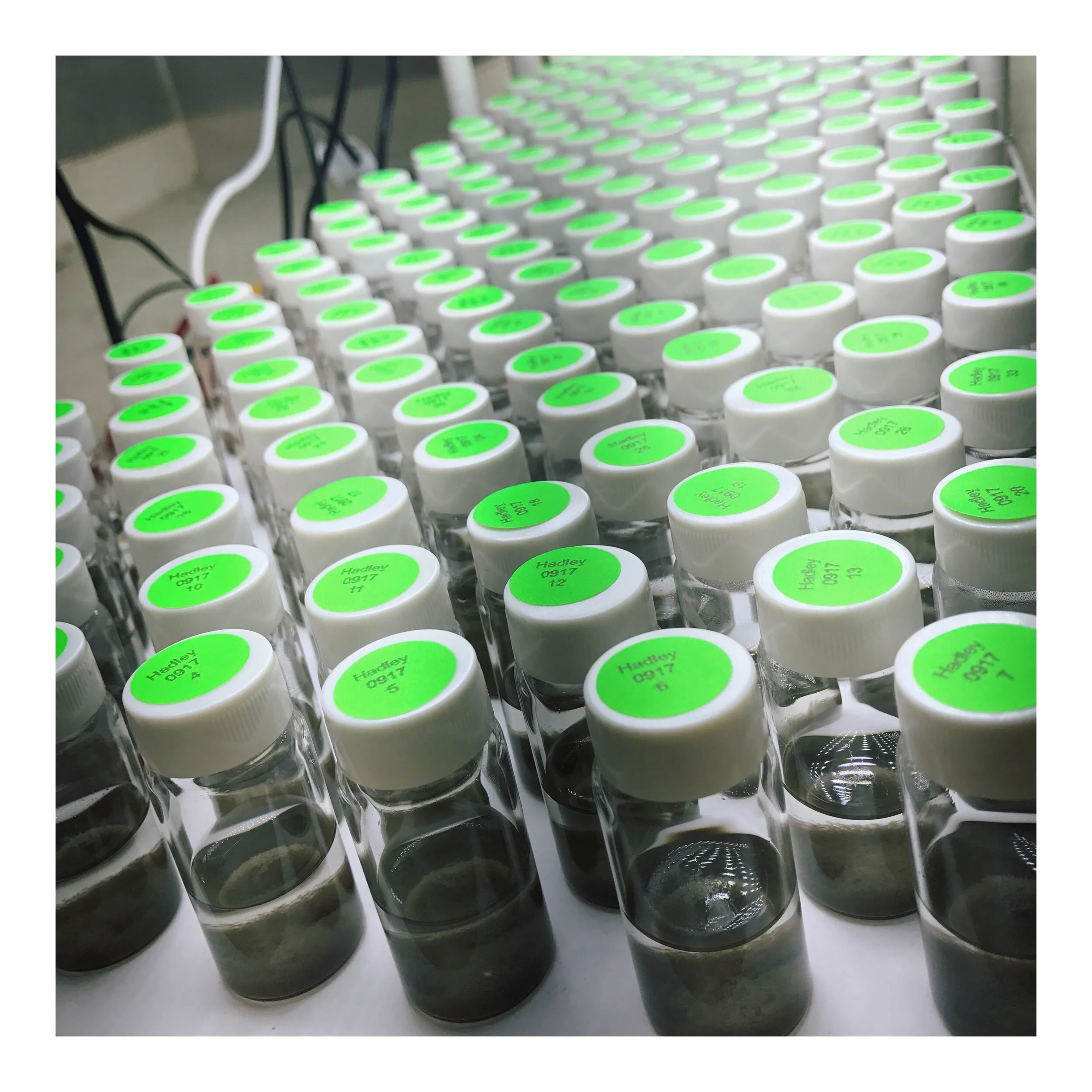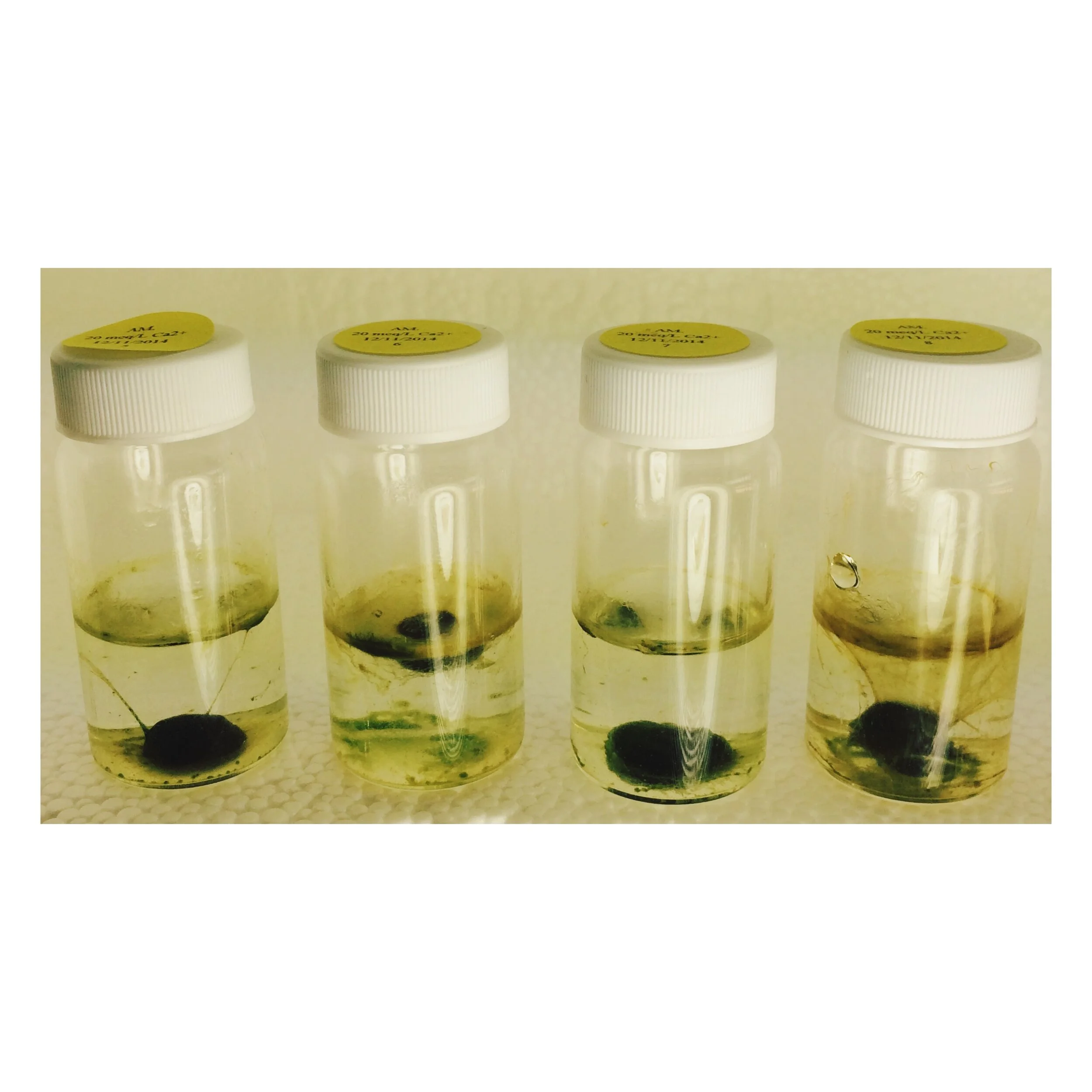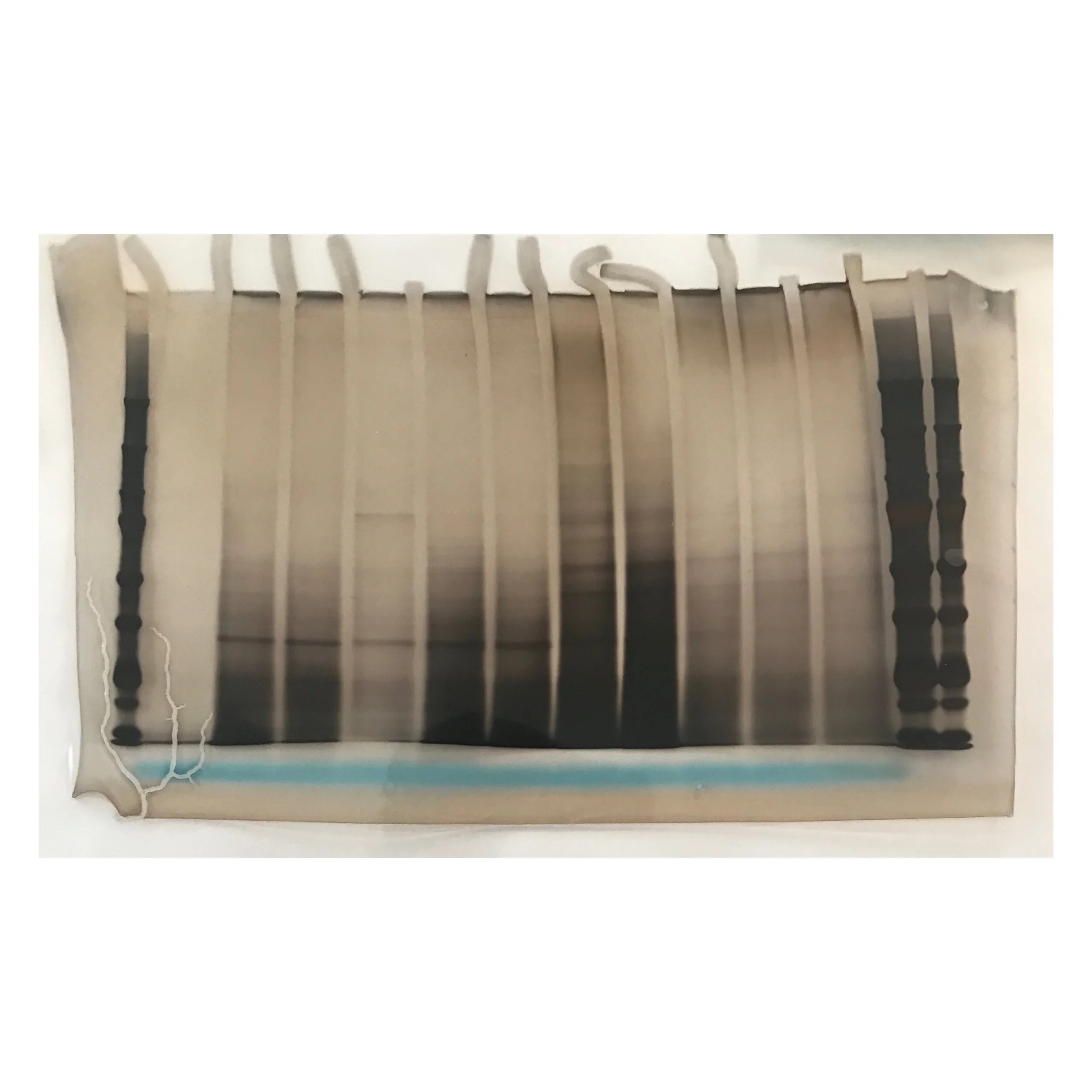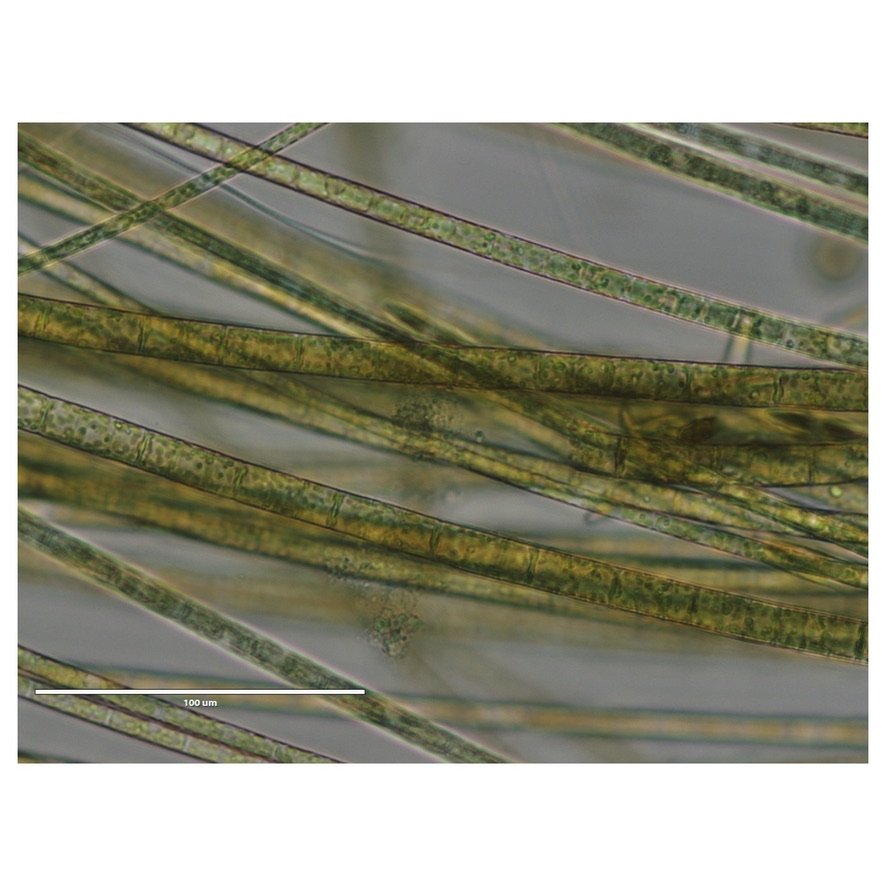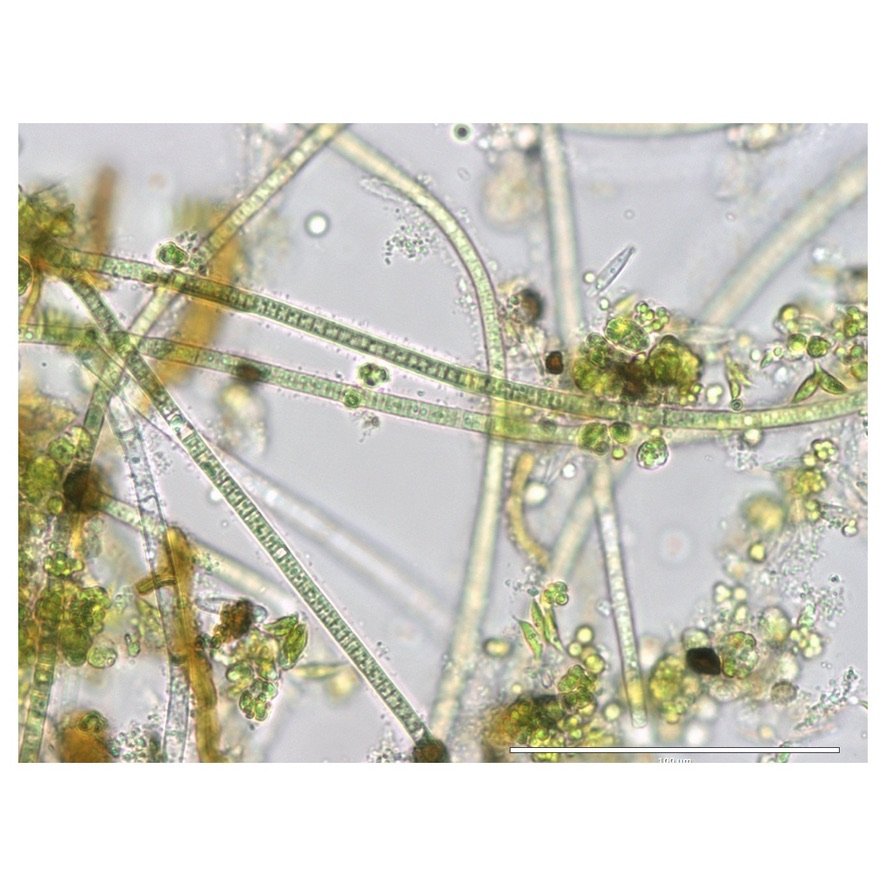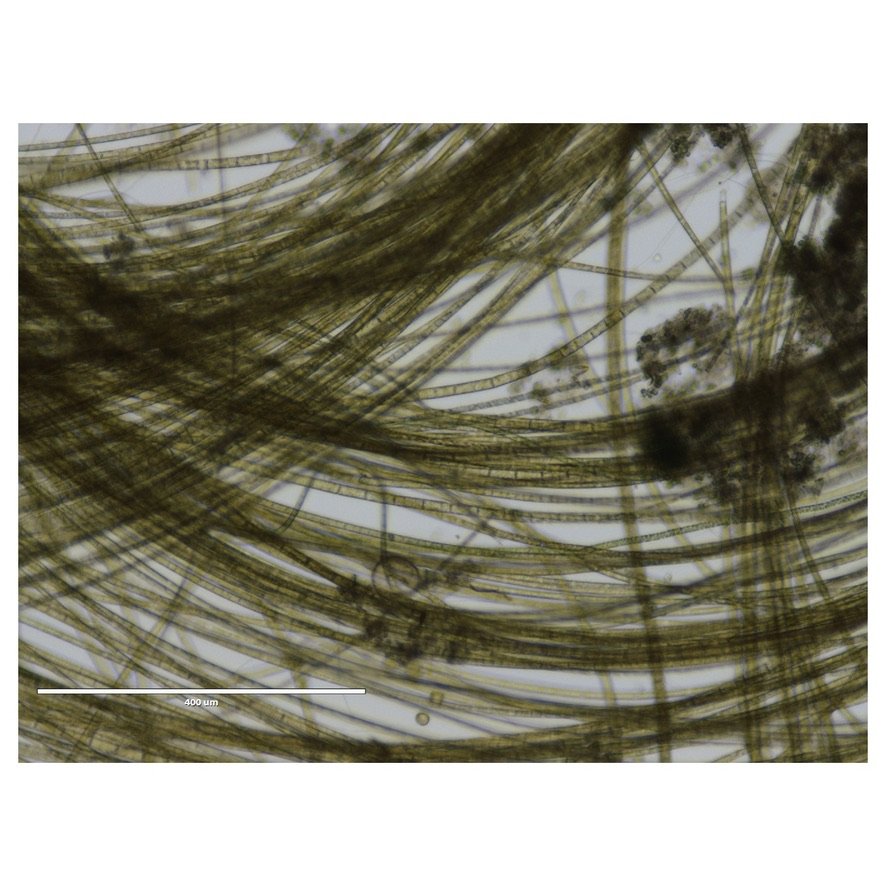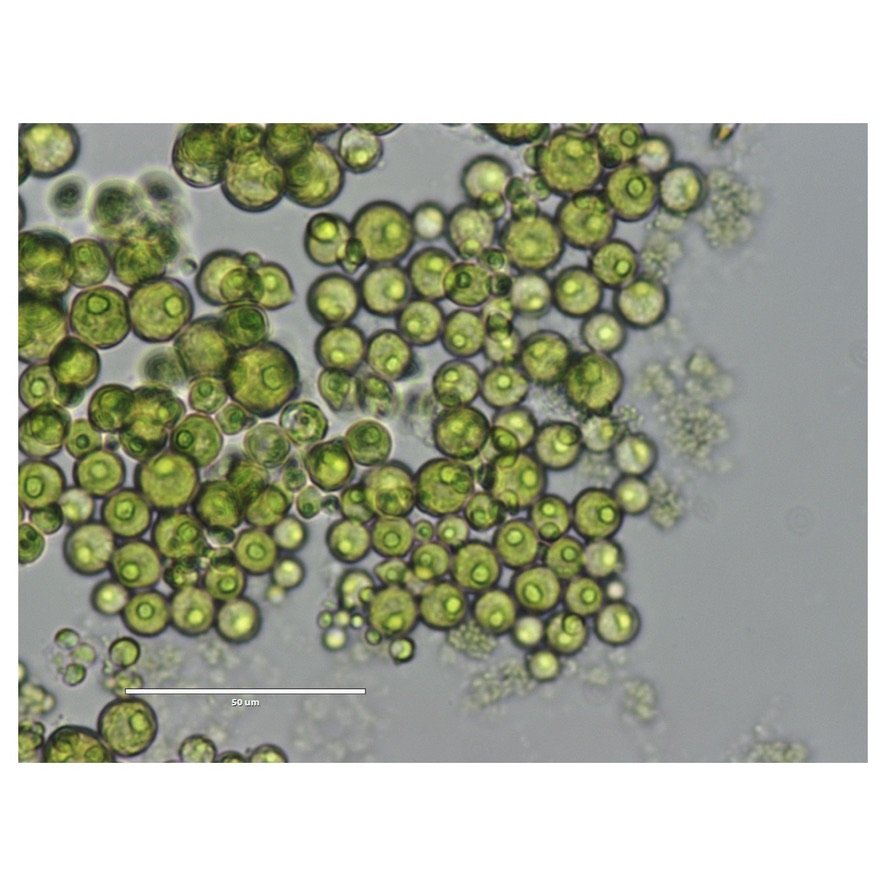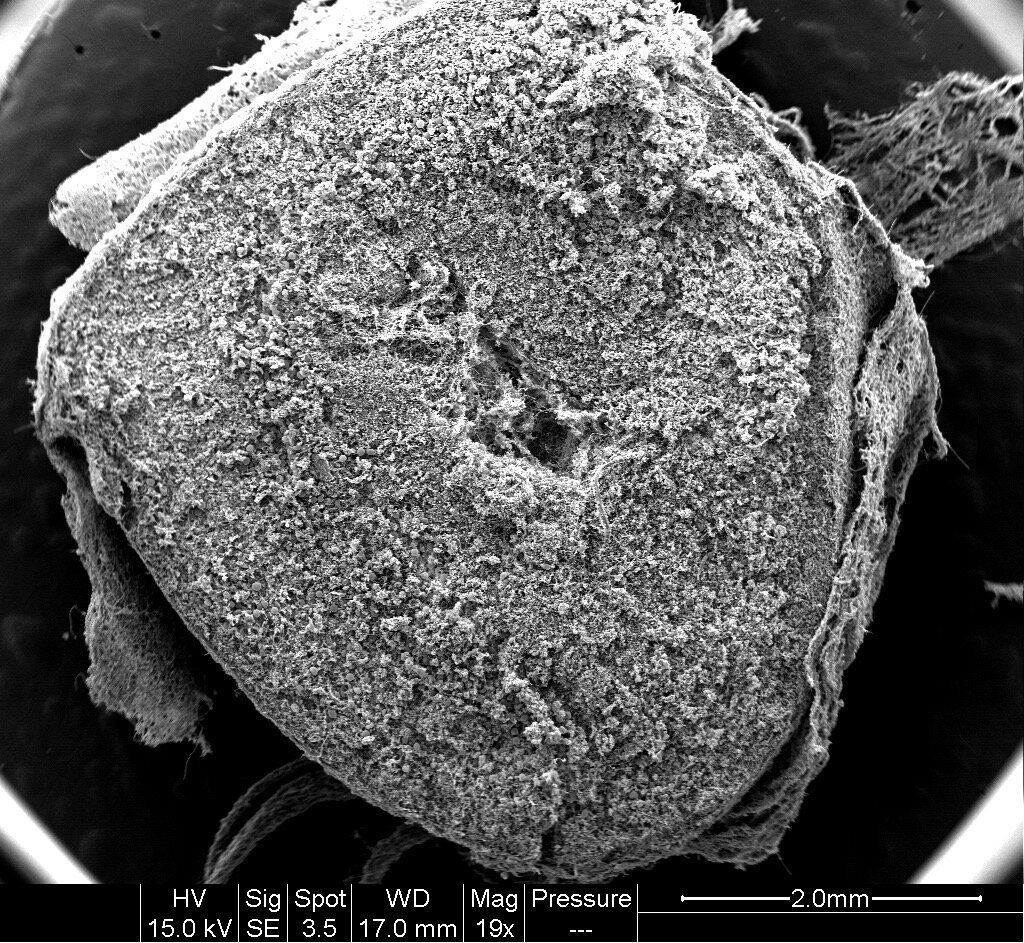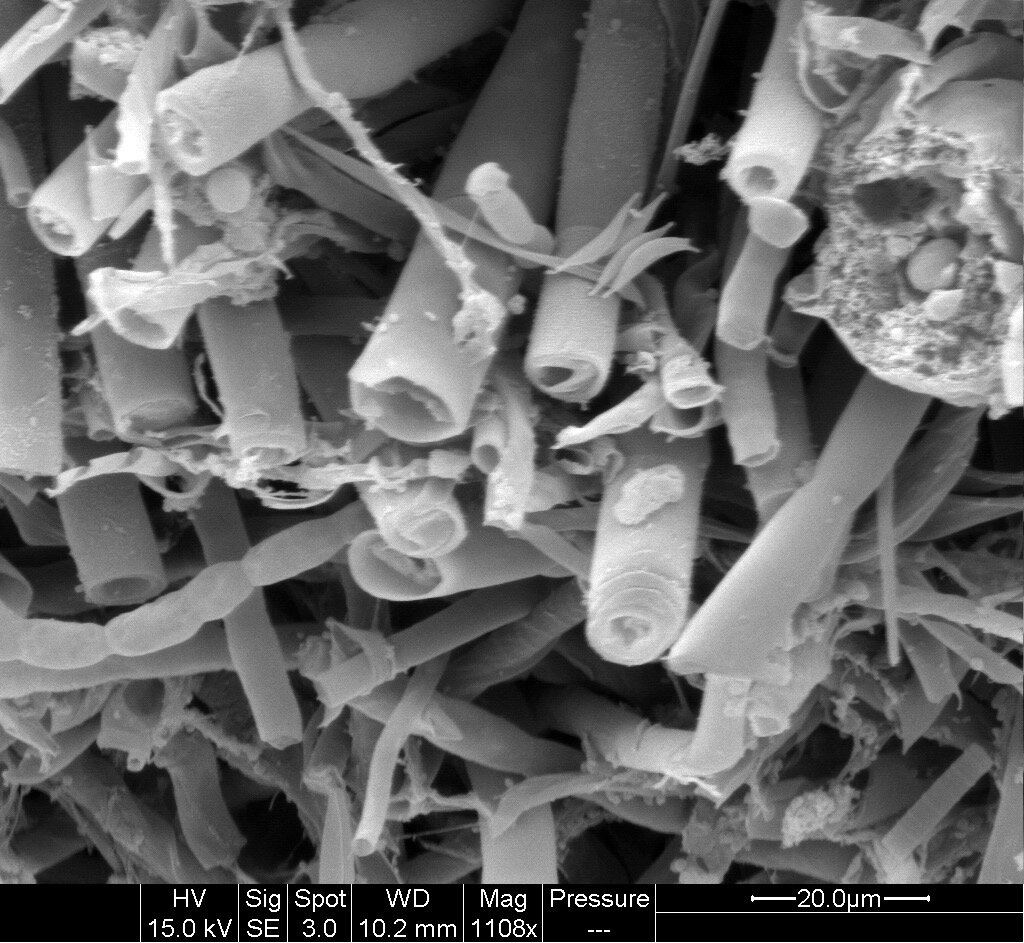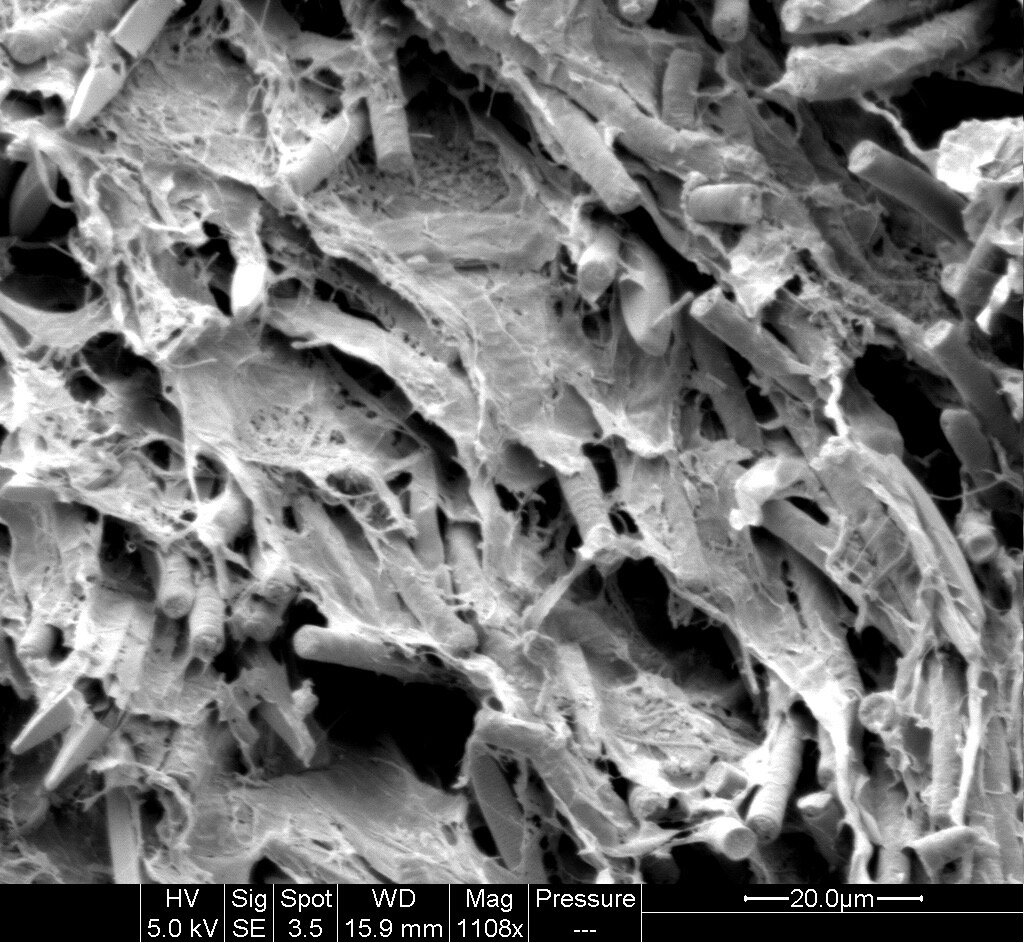
The cultivation of oxygenic photogranules, and process for energy-positive wastewater treatment.
The oxygenic photogranule (OPG) process is a light-driven process for wastewater treatment, that was developed based on photogranulation of filamentous cyanobacteria, nonphototrophic (i.e., heterotrophic) bacteria, and microalgae. Unlike other biogranular processes requiring airlift or upflow-based mixing, the OPG process can be operated in stirred-tank reactors without aeration.
Photogranules are generated in incubations of activated sludge batches under static conditions. They are also formed in turbulently mixed sequencing batch reactors (SBRs) performing carbon and nitrogen removal consistent with conventional wastewater treatment. Both types of photogranules are dense, spherical or sphere-like aggregates of the typical blue-green color of filamentous cyanobacteria. The highest densities of filamentous cyanobacteria were visible in the outer layer of photogranules. In this layer, the cyanobacteria and copious amounts of extracellular polymeric substances (EPS) form an interwoven mat-like structure.
Photogranulation of activated sludge or raw domestic wastewater occurs under a wide range of experimental conditions. It is likely that cyanobacteria play a key role in the formation of the spherical structure of OPGs. The structure of OPGs shares essential features with microbial mats and naturally occurring cryoconite granules, notably the mat-like phototrophic layer and the syntrophic relationship with heterotrophs. The oxygenic photogranule process is an example of biomimicry where a naturally occurring phenomenon inspires a biotechnological process like energy-positive wastewater treatment.
